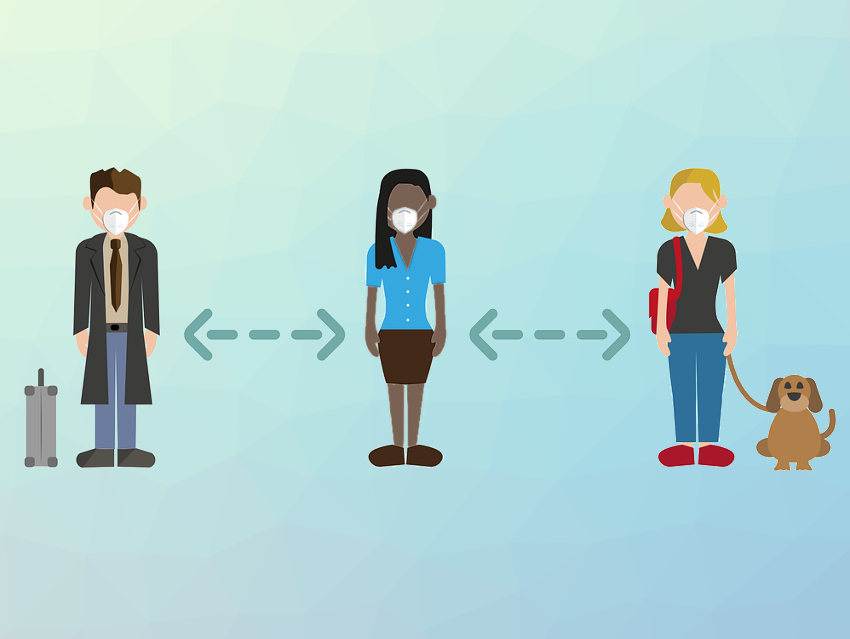The COVID-19 pandemic is caused by the coronavirus SARS-CoV-2. To understand and prevent the transmission of this virus, it is important to know how virus-laden droplets and particles produced during breathing, speaking, sneezing, coughing, etc. are transported in air. Insight into these processes can help to inform public health policy, e.g., concerning mask-wearing and social (or rather, physical) distancing. However, the scientific basis for understanding droplet emission used by public health agencies is still based on measurements and simplified models from the 1930s and 1940s.
Sivaramakrishnan Balachandara, University of Florida, Gainesville, USA, and colleagues have developed an improved model for the change of droplet or aerosol concentration over time based on a theoretical analysis of the underlying physical processes. These processes include droplet generation by exhalation, a potential transformation into airborne particles by evaporation, transport through the air by both the exhaled puff of air and by ambient air turbulence, gravitational settling of some droplets, and finally, the inhalation by the receiving host. The model can be used for scenarios such as breathing, talking, sneezing, and coughing under both dry and humid atmospheres, in open or confined conditions, and with different types of masks.
The updated model has implications for protective measures against COVID-19. As an example, when the water in small droplets evaporates, a non-volatile aerosol particle can remain, which might contain the virus and allow transmission over larger distances and for longer times. A small droplet or particle with a diameter of 10 μm, e.g., can take almost 15 minutes to fall to the ground—which could allow for contact with the virus even when distancing rules are observed. The team points out, however, that their theoretical framework makes several simplifying assumptions. It can act as a starting point and could be further improved to allow a reliable prediction of transmission.
- Host-to-host airborne transmission as a multiphase flow problem for science-based social distance guidelines,
S. Balachandar, S. Zaleski, A. Soldati, G. Ahmadi, L. Bourouiba,
Int. J. Multiph. Flow 2020, 132, 103439.
https://doi.org/10.1016/j.ijmultiphaseflow.2020.103439
Also of Interest
- Collection: SARS-CoV-2 Virus
What we know about the new coronavirus and COVID-19



